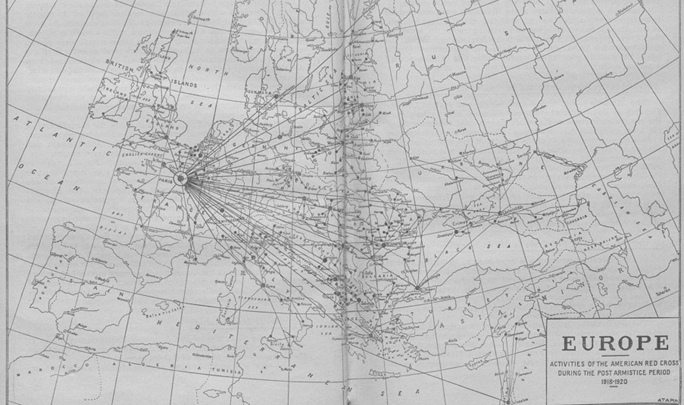│By Clem Delany, Acquisitions Editor, Gale Primary Sources│
Note: Links to documents in this blog post will be provided on publication of the digital archive.
Like many people in the UK, my first experience of humanitarian appeals was through charity campaigns at school or through Blue Peter. The first one I strongly recall is sending care packages to Romania. Famine in Ethiopia and the need for wells in Africa also loom large in my memories of this era; if Matt Baker told me to give money I said how much (up to a limit of £2)?
Years later, studying history at University, I took a module on the Greek famine of 1941-1942. It was something I had known nothing about, illustrated with stark numbers of Axis requisitions, of the dead and the starving, and by accounts from survivors.
Primary sources for situations such as famines can be a real challenge for scholars; data is shaky, accounts are limited. Few people in a famine zone are there to count heads or write a dissertation; they are either struggling to survive the disaster or there to provide aid.
Value of Aid Organisation Archives
This is one of the reasons the archives of aid organisations, such as the International Federation of Red Cross and Red Crescent Societies, can provide such valuable sources for research. First-hand accounts generated at the time are powerful sources not only for disasters like famine, flooding, or earthquakes but from struggling communities in war zones, or displaced people on the move, particularly in the Global South or areas where communication networks are limited or no longer functioning.
2019 saw the centenary of the International Federation of Red Cross and Red Crescent Societies. Now, a portion of their historical archives are made available digitally in Gale Primary Sources’ Global Development and Humanitarian Aid: The International Federation of Red Cross and Red Crescent Societies, 1919-1997, with unique material from across the globe, focused on disaster response and community preparedness in Europe, Asia, Africa, the Pacific, and the Americas, as well as community resilience and welfare in the form of public health, environmental concerns, or youth work.
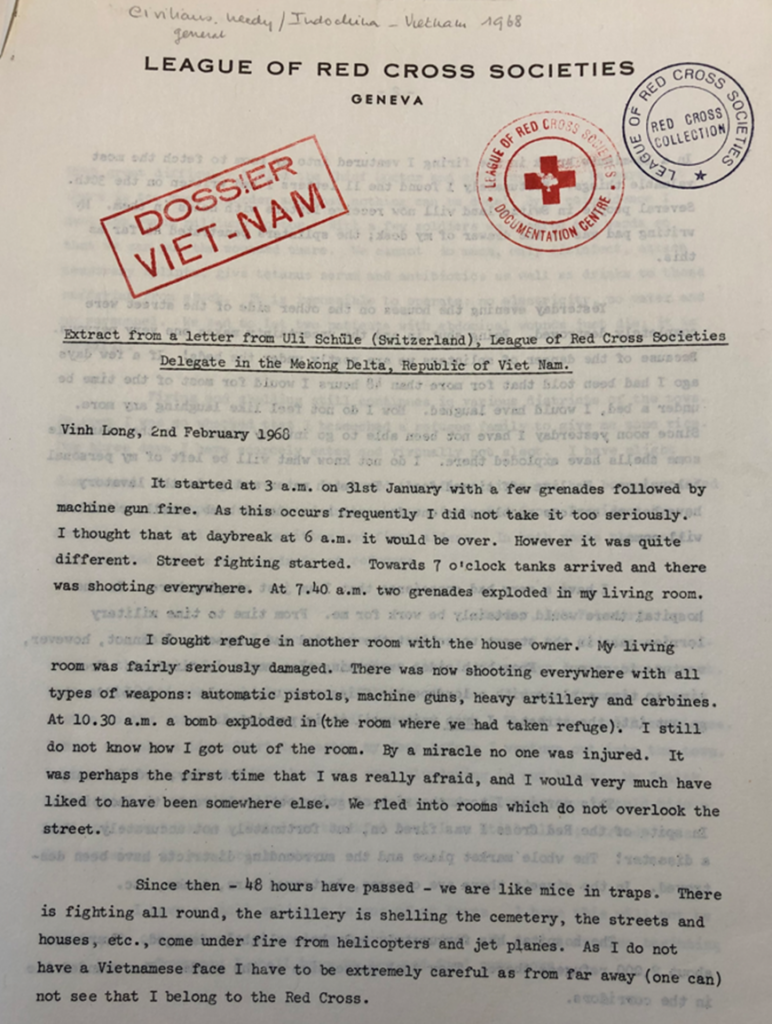
What is the International Federation of Red Cross and Red Crescent Societies?
The Red Cross Movement was born in 1863, when Henri Dunant, motivated by his experiences in the horrific aftermath of the Battle of Solferino in 1859, advocated for the creation of voluntary relief organisations to help provide care for wounded soldiers. Dunant and a small group of Swiss worthies established the international aid organisation that became the International Committee of the Red Cross (ICRC). The ICRC was, and is, focused on wartime relief and the development of rules around warfare and humanitarianism in conflict zones.
The League of Red Cross Societies was established in May 1919, at the instigation of its first Chairman, Henry Davison, then head of the War Council of the American Red Cross. The League initially consisted of the National Red Cross Societies of the UK, USA, France, Italy, and Japan (the Allied powers of WWI).
The new body was intended as a means to expand the activities and reach of the existing network of Red Cross societies around the world. Early activities of the League included responding to a typhus outbreak in Poland, the Great Kantō Earthquake of 1923, and famines in Russia and China.
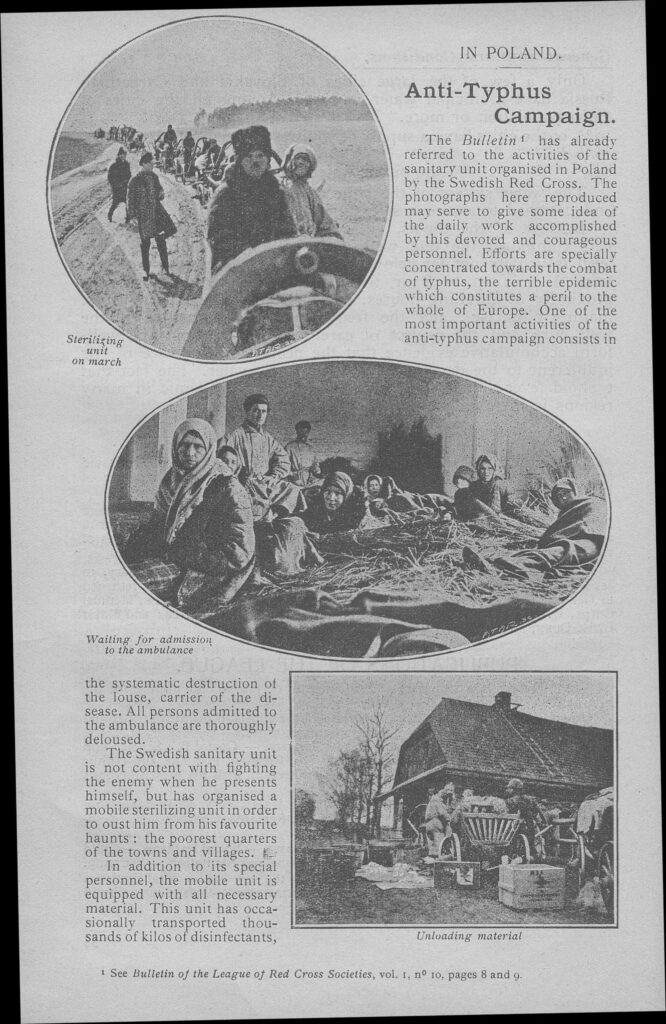
In 1963, the IFRC and the ICRC were joint recipients of the Nobel Peace Prize. The League of Red Cross Societies became the League of Red Cross and Red Crescent Societies in 1983, reflecting the number of Red Crescent Societies based in majority-Muslim countries, before becoming the International Federation of Red Cross and Red Crescent Societies (IFRC) in 1991. Initially based in Paris, the IFRC moved its headquarters to Geneva in 1922, transferring all its personnel from Paris to neutral Geneva in 1939.
Together, the IFRC, the ICRC, and the National Societies represent the three independent branches of the Red Cross and Red Crescent Movement today.
What will I find here?
The archives of the IFRC, held at its headquarters in Geneva, represent over a century of humanitarian work, community support, and disaster relief action around the world. The experiences of those affected by disasters and of disaster response and preparedness at a local, national, and international level, are valuable sources for those studying or researching twentieth century history and politics, particularly themes such as environmental change and challenges, public health, displaced people and mass migration, humanitarian aid, and development.
Much of the material was produced locally and sent to the IFRC headquarters in Switzerland, providing a rich and varied resource through which to explore key topics and events of the twentieth century.
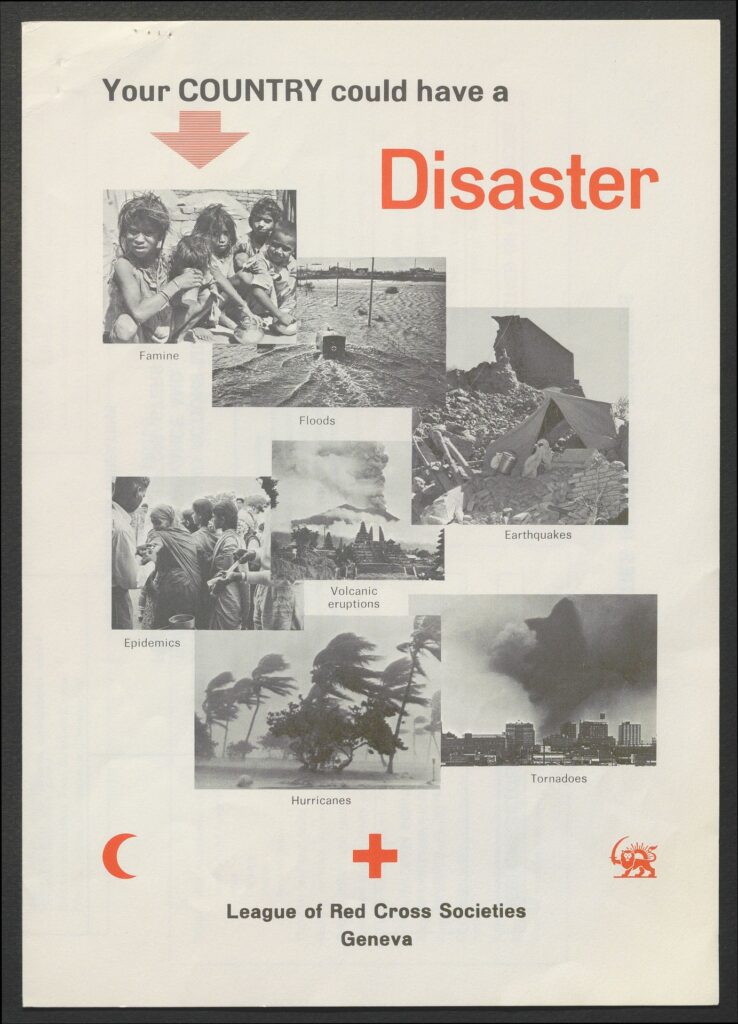
The digital archive is split into two core collections, the Central Registry Archives and the Non-Registry Archives. The Central Registry maintained files of correspondence and reports sent or received by the various departments of the League of Red Cross Societies from 1919 until the early 1970s. The digital archive contains around 900 Central Registry files from various series including material on league organisation, conferences, and aid to victims of war, as well as specific series on tuberculosis, epidemic diseases, and disaster relief.
The Non-Registry Archives took over from the Central Registry when it closed in the 1970s but also contain some material prior to this from departments of the IFRC that maintained separate files. Material from the Non-Registry Archives includes Coordinated Relief Bulletins and Relief Bureau Circulars from the 1940s to the 1980s, reporting on the relief activities of National societies and the IFRC and providing information on ongoing disasters and specific needs and appeals.
![Case Files: ROP 7922 Kampuchea Troubles [General], 1979-1981.](https://review.gale.com/wp-content/uploads/2025/03/4.png)
There are also nearly 1000 files from the Relief Operations Bureau, the League’s coordinating body for disaster relief operations. These date from the 1970s and 80s, and relate to specific disasters from drought in Senegal to earthquakes in Nicaragua and displaced people in Algeria, highlighting the reach and breadth of the work of the IFRC.
A further 1000-odd files are sourced from a broad range of topics held under the Thematic Operational Files; these include files relating to subjects such as environmental issues, public health and first aid, migration and displaced people, specific support for children, young people, elderly people, and women, mission reports from many regions, social development and community welfare, disaster preparedness and community resilience, and specific conflicts including the Vietnam war, the Korean war, the Nigeria-Biafra war, and various conflicts in the Middle East.

IFRC Periodicals
Another valuable aspect of the digital archive is the inclusion of a full run of the English-language editions of the regular IFRC periodical from 1919 to 1984. The Bulletin, in its various incarnations, can include reports on conferences and missions, information on campaigns and appeals, and spotlights on particular people, or on issues such as unemployment or vaccination.
The periodical has changed titles and publication frequency and format several times, and appears here as:
- Bulletin of the League of Red Cross Societies, 1919-1921
- Information Circulars and Supplements, 1921-1924
- Information Bulletin, 1925-1930
- Review and Information Bulletin, 1931-1932
- League of Red Cross Societies Monthly Bulletin, 1933-1939
- League of Red Cross Societies Bulletin, 1940-1946
- Monthly Report of the Secretariat of the League, 1947-1958
- Monthly News and Report, 1959-1963
- Panorama, 1964-1984
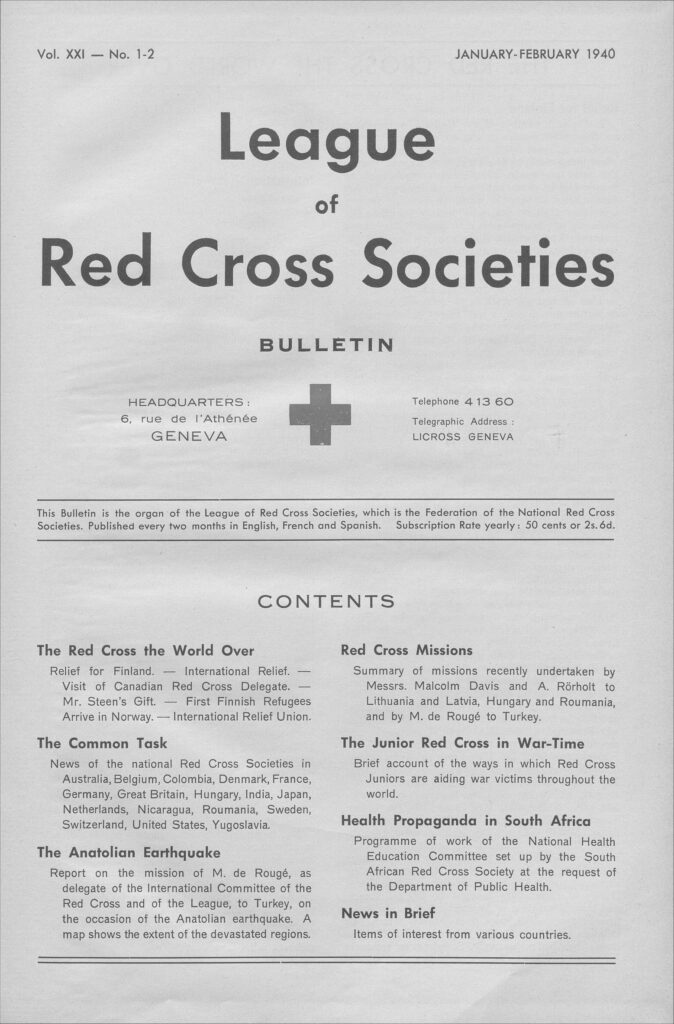
Global History Through Humanitarian Aid
Humanitarian work can feel like background noise to many of us; a disaster happens somewhere, and there are organisations that respond. Perhaps you give some money, perhaps you volunteer at a local fundraiser, perhaps schools send care packages overseas.
But the archives produced by the IFRC in the course of humanitarian aid and development work provide a broad view of over a hundred years of world history, offering students and researchers unparalleled insight into foreign aid and humanitarian practices, government policies, concepts of development, and local responses to environmental and man-made disasters, as well as rare details and perspectives of disaster events as they happened.
The material digitised in Global Development and Humanitarian Aid: The International Federation of Red Cross and Red Crescent Societies, 1919-1997 goes far beyond a narrative of disasters, but represents a window into global history and the politics of international relations and diplomacy that is yet to be fully explored.
If you enjoyed reading about humanitarian aid and disaster relief, you may like to read the following posts:
- The Untold Story of the 700 Orphaned Polish Children of New Zealand
- The Wrath of Mountains: Explaining Volcanic Eruptions from the Late Eighteenth Century to the Modern Day
- Humanity and Courage: Refugees and the Memory of Those Who Saved Them
Blog post cover image citation: “Bulletin of the League of Red Cross Societies.” Bulletin of the League of Red Cross Societies, vol. 2, no. 1, Oct. 1920. (p. 36). Global Development and Humanitarian Aid: The International Federation of Red Cross and Red Crescent Societies, 1919-1997.

